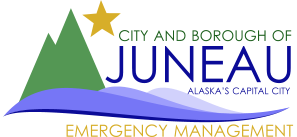Avalanche Advisory Archive Pre-2016
| Date Issued: | 2013-03-12 |
|---|---|
| Danger: | 3 |
| Trend: | 4 |
| Probability: | 4 |
| Size: | 3 |
| Problem: | 0 |
| Discussion: | The National Weather Service Forecasts- TODAY...MOSTLY CLOUDY. BECOMING LOCALLY WINDY. ISOLATED SNOW TONIGHT...DECREASING CLOUDS. LOCALLY WINDY. LOWS 17 TO 23. WEDNESDAY...MOSTLY CLOUDY. COLDER. HIGHS AROUND 26. NORTHEAST Temperatures continue to remain cool around the region. Today should be slightly cooler. We received about 13mm of precip at the Mt Roberts Tram Summit yesterday which was slightly higher than the forecasted amount. This left just over 10cm of snow at the Tram Summit weather station which has since either settled slightly or been stripped down by the wind. The Mt Juneau site showed just about the same accumulation but even more stripping by the winds. Winds were considerable during the last 48 hours gusting into the 30's with spikes hitting 40. This was out of our traditional SSE. This tends to cross load the gullies on the urban avalanche paths. Around 7pm last night the winds died off and rolled around to the NE before picking up once again into the 20's with higher gusts into the 30's now directly loading our urban avalanche paths. All this new windslab is coming to rest on close to a foot of new snow in the last 5 days on the channel locations and more like 14-15\" on Douglas Island locations. All this new snow and windslab is resting on a bed surface that is quite spatially variable. You have sun crusts on south faces. Shallow windslabs with near surface faceting in places making those slabs weak. As well as surface hoar from our cold clear nights last week. These bed surfaces do not support load well. Combine this with the active windloading we have present today and avalanche danger is CONSIDERABLE. While this windloading continues in the urban enviroment Natural avalanches are probable, potentially destructive avalanches may come near or reach developed areas. Natural Avalanches have been sighted in the urban enviroment already today. More are expected. Human triggered avalanches remain probable in windloaded locations. Remember now with a change in wind direction that could be almost anywhere... We had SSE winds and NE winds... so anything slightly west facing could be dual wind loaded. and N-S facing slopes also have loading in places. Be extremely cautious if you choose to venture into the high mountain backcountry. We had some tender soft windslabs two days ago and since that time have increased the windloading and hardened these slabs in places. Continue to avoid terrain traps. Consider what the consequences would be if something were to slide in the area you choose to operate and reconsider if you dont like the answer to the question. Please aviod spending time in the urban avalanche paths today. Avoid The Flume Trail. Avoid walking above the gates in the Behrands neighborhood. Avoid walking/jogging or parking along Thane Road. Should avalanches occur today they have the potentail to be quite fast. Enjoy your day. |
| Tip: | Wind Slab- A cohesive layer of snow formed when wind deposits snow onto leeward terrain. Wind slabs are often smooth and rounded and sometimes sound hollow. What direction the slope faces with respect to the wind is a HUGE factor. Yes, it's true! And this takes most people by surprise. But ignore wind at your own peril. It's easy to ignore wind too because we human beings are big and heavy creatures and most of the time, we hardly even notice wind unless it mess up our hair. But imagine yourself as a bird where wind is its entire world. Then imagine yourself as something even smaller and lighter--like a feather?or, how about new fallen snow? Wind to a delicate snowflake is like the ocean current to plankton. So why is wind important? As we have learned, loading (added weight) causes of most avalanches and the fastest way to load a slope is by wind. Wind erodes from the upwind side of an obstacle such as a ridge and it deposits on the downwind side, and wind can deposit snow ten times more rapidly than snow falling from the sky. Wind deposits snow most commonly on the leeward side of upper elevation prominent terrain features such as ridges, peaks and passes. We call this \"top loading.\" But wind can also blow across a slope which we call \"cross loading\" and wind can even cause loading when it blows down a slope. (figure 3-17) Remember that wind can blow from any direction and thus deposit snow on most any slope. (See Weather chapter on weather factors affecting wind slab development) The bottom line: be suspicious of any steep slope with recent deposits of wind drifted snow. Wind slabs are so dangerous because: ? As the wind bounces the eroded snow across the snow surface, it grinds up the snow into small, dense particles. By the time they finally come to a rest on lee of an obstacle--where the wind slows down--they pack into a heavy, dense layer of snow that can easily overload any buried weak layer. ? When strong wind starts to blow, within minutes, wind can turn nice fluffy powder into a dangerous wind slab. When very safe conditions quickly turn into very dangerous conditions, it easily takes people by surprise. ? Wind slabs can form in extremely localized areas. Often only a few inches separates safe snow from dangerous snow. We often hear people say, \"I was just walking along and suddenly the snow changed. It started cracking under my feet, and then the whole slope let loose.\" |
